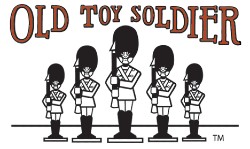
in colonial service uniform and an Ethiopian
tribesman
Introduction
In October 1935, Italian Armies invaded Abyssinia (Ethiopia) from their existing colonies of Eritrea and
Italian Somaliland, beginning an eightmonth war and a six-year occupation. This was an Italian adventure to expand Italy’s control of the region, as well as to impress European nations.
By 1932 Mussolini was already committed to an eventual war of conquest. Military planning began about this time. A border incident would eventually become the official cause of the war. Ethiopia, led by Haile Sellasie, was ill prepared to face an invasion by a modern industrial power.
Mussolini authorized the use of poison gas, not only against the Ethiopian troops but civilians as well.
By May 1936 the Italians had managed to defeat the Abyssinian Army and entered the capital, Addis Ababa.


La Domenica Del Corriere was a famous Italian weekly newspaper which ran from 1899-1989. It was
known for its front cover illustrations and its past issues are highly prized by collectors. It usually featured patriotic themes as shown in the example shown here, depicting the Italian army and air force during the invasion.
Response to the conflict by toy soldier makers – Britains
This article focuses on the response to the conflict by toy soldier manufacturers from Great Britain. Part 2 will cover the output from manufacturers in some other countries. The British response at
the time came from Britains, with sets representing both sides of the conflict, as well as Johillco and Crescent.





Britains were quick to produce sets of figures representing both sides in the conflict. They had already been producing, since 1912, the Bersaglieri set 169, as well as Italian Infantry in
review order (set 165) and Cavalry (set 166). In 1936 a number of new sets were introduced by Britains.
A new style of uniform was introduced in 1933 by Mussolini as part of reforms to modernize the army. This was accurately reflected by Britans. Two main versions existed – continental and overseas as worn in the Italian Colonies. The old Adrian helmet from the First World War was replaced with a more functional design as well as a tropical sun helmet which was more suitable for use in the expanding African colonies.
A single Bersaglieri Regiment (the 3rd) took part in the war. They were an elite high mobility light infantry and can be recognized by their distinctive wide-brimmed hat decorated with black western capercaillie feathers. This popular long running set was first introduced by Britains in 1911 and continued until 1941. It was reissued post war 1946-1949 and again in 1954- 59 and was still available in 1966. An officer was introduced in 1954.
Ethiopia/Abyssinia had a brave and relatively well trained and equipped Imperial Guard but it was too small. The majority of the troops in the conflict would be the tribal warriors, often armed with only swords and spears. They were generally clad in white.
The Bodyguard served the dual purpose of providing security for the Emperor and being an elite infantry division. It was, nevertheless, poorly equipped to face a modern European invading army.
Second grade figures from the Armies of The World range were also produced by Britains. The painting was simplified with less detail and were sold singly. The Tribesmen and the Emperor’s Bodyguard were included in the range after WW II. These were discontinued in 1959.




Response to the conflict by other British toy soldier makers – Hill and Crescent


John Hill and Company was started in 1898 by a former employee of Britains and was the first big British hollowcast company to sell their figures individually. Less expensive than Britains figures, that were typically sold in sets, these individual toy soldiers were meant to be played with and enjoyed. Hill were not quite so interested in the authenticity or detail of uniforms as Britains, and the quality of their designs varied. But they produced some very fine figures to commemorate the Ethiopian campaign. By the mid1930s Hill had become second only to Britains in terms of quality and quantity.
Johillco also responded to historical events happening at the time with special issues for occasions such as the Italo-Abyssinian War, by issuing single figures and the occasional boxed sets.

Ethiopian infantry marching; J 145 B. Mule carrying ammo boxes; and J 156-7 Ethiopian
Regular Army stretcher bearers and wounded man.







Crescent produced a single Abyssinian figure which was also marketed as an African Tribesman.
Crescent began producing military figures in 1930. These early figures were well designed, but the painting quality varied. These colorful figures were the only ones they produced in response to the conflict.
In Part 2 we will return to the subject, focusing on the toy soldiers produced by other makers, including Heyde, CBG Mignot and others.

the ready and J124. Sudanese Camel Corps



